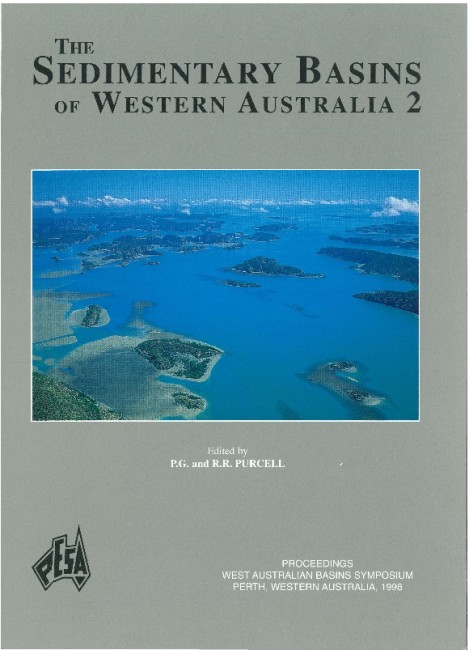Publication Name: The Sedimentary Basins of WA
Authors: J. E. Blevin, H. I. M. Struckmeyer, D. L. Cathro, J. M. Totterdell, C. J. Boreham, K. K. Romine, T. S. Loutit and J. Sayers
Publication Volume: 2
Date Published: December 1998
Number of Pages: 38
Reference Type: Book Section
Abstract:
A regional study of the Browse Basin, undertaken at AGSO during 1996-97, sought to develop a structural and stratigraphic model for the evolution of the basin, with particular emphasis on the evolution of petroleum systems in the prospective Mesozoic and Cainozoic sections. The resultant tectonostratigraphic framework includes twenty-two megasequences and supersequences (BB1 to BB22), ranging in age from Carboniferous to late Tertiary. These sequences correlate to six tectonically-controlled basin phases, and reflect the evolution of the basin from a Palaeozoic intra-cratonic rift basin to a semi-restricted, passive margin basin following breakup in the Callovian.During the Carboniferous to Callovian (Phases: Extension 1, Thermal Subsidence 1, Inversion 1 and Extension 2), accommodation was driven by firstorder intraplate and interplate deformation events, and deposition was dominated by terrestrial to shallow marine systems (BB1 to BBS). From the Callovian to Turonian (Phase: Thermal Subsidence 2; BB9 to BB12), higher sea level, initial high rates of post-rift subsidence, and a delayed phase of subsidence related to lower crustal processes resulted in a prolonged period characterised by high rates of accommodation.
By the Callovian, the depositional substrate resembled a ramp margin, with strata above this boundary characterised by progradation to the northwest and north-northwest. Long-term depositional patterns were further influenced by the presence of a long-lived mature sediment source in the adjacent Proterozoic Kimberley Basin, relay ramps and lineaments that dissected the basin and focussed sediment outfall points on the Yampi and Leveque shelves during sea level lowstands.
Source rocks were deposited during periods of maximum accommodation in the initial Palaeozoic rift phase, and during subsequent coeval periods of thermal subsidence and higher sea level in the Early Triassic, Tithonian, and Early Cretaceous. Organicrich rocks have also been recognised in prodelta and delta plain facies of Late and Middle Jurassic age. Reservoirs in the post-Callovian succession are best developed in lowstand fan systems basinward of the Yampi Shelf, and as transgressive facies onlapping the Prudhoe Terrace, and Yampi and Leveque shelves.


